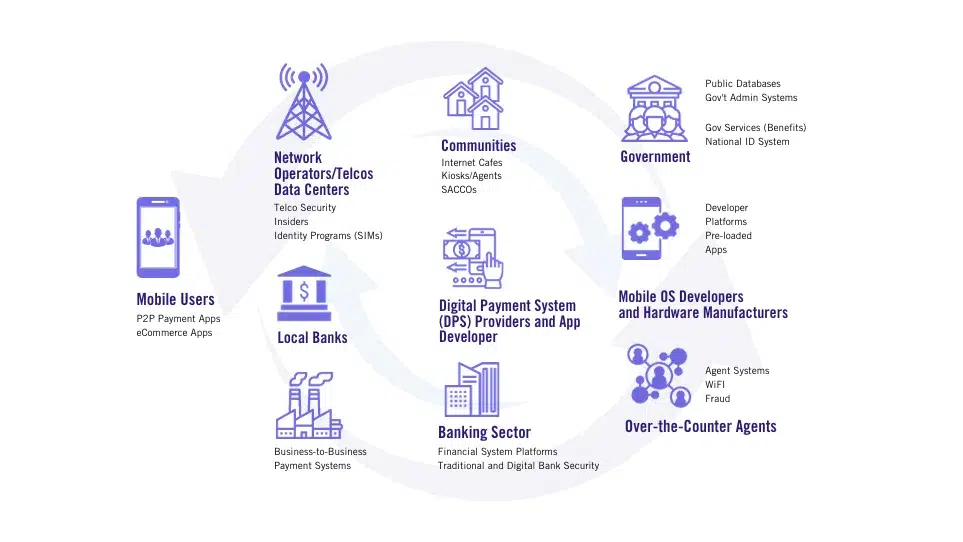
Securing the Digital Financial Ecosystem Abroad


Gerry Libunao is a member of the Open Generation Management Committee. He recently addressed industry leaders about the evolution of technology innovation, standards, and regulations in his Open Generation 5G Summit keynote speech. Also, he led a panel presentation about the potential of 5G mmWave use cases. He is a trusted voice of Open Generation, actively participates in consortium meetings and events, and has contributed to several published thought-leadership papers about the potential of 5G networks to solve challenging use cases.
Verizon identifies with the Open Generation mission of maintaining and securing U.S. leadership in 5G technologies during a period of rapid technological changes amidst global uncertainties. As one of the founding members, we take pride in directionally setting key Vertical priorities starting with 5G Drones, driving towards technology breakthroughs, and accelerating innovation through collaboration with Industry and Regulators.
Open Generation members, both from the Industry and Academia, provide a unique opportunity, where in a collaborative, driven approach, use cases are identified, solutions that can benefit from 5G are developed, and brought to private 5G testbeds for experimentation. In the case of 5G Drones, the use of commercial 5G corridors provides a path toward commercialization based on the public and private partnership at the national, state, and local levels.
Verizon 5G Edge builds cloud computing services right into the Verizon 5G Ultra Wideband network. Millimeter-wave delivers massive amounts of data quickly with very low latency to meet the demanding performance requirements of the 5G use cases and applications in the Open Generation funnel. Such cross-industry and regulatory partnership bends the commercialization curve at scale which leads to overall positive societal and economic impact.
Verizon pushed for Urban Air Mobility (UAM) and Advanced Air Mobility (AAM) as a priority 5G Drone use case which will uniquely benefit from the Open Generation 5G Standalone mmWave testbed in the Griffiss Airport test site. The consortium is already looking into 5G-enabled vertiports where “flying taxis” and “cargo-hauling drones” can take off and land, with 5G-enabled infrastructure to support 5G UAM/AAM corridors, e.g. between Griffiss and Syracuse International Airport. The UAM use case opens the door to a 5G-enabled Smart City + Healthcare Vertical opportunity.
Drones for smart farming are another use case that leverages the Open Generation Virginia Tech Kentland Farm testbed, currently configured with a 5G Non-Standalone mmWave network. This will open the door to a Smart Agriculture vertical opportunity. This is particularly compelling due to the worsening climatic changes that will disrupt crop and livestock production, e.g. precision farming enabled by IoT and 5G can increase crop yield.
Another is the use of collaborative drones and terrestrial robots in extending the First Responder HAZMAT use case, as well as its use in Smart Agriculture.
In the early days, help shape the structure and processes which led to an efficient workflow across the Open Generation working groups, as well as, standards, e.g. 3GPP, and industry collaboration, e.g. Aerial Connectivity Joint Activity (ACJA) initiative between GSMA and GUTMA, GSMA North America Drones initiatives. More importantly, instilling drive and ambition in Open Generation to push 5G technologies to realize its mission.
New members should help in both the definition of requirements and bringing their solutions into the solution pipeline for experimentation.
It is clear that current membership comes from the mobile ecosystem. It is imperative that we bring drone and aviation ecosystem stakeholders. We also need to consider accommodating small startup companies from needs definition and/or experimentation using the Open Generation testbed.
Open Generation should also look into collaboration with government agencies, e.g. FAA and NASA, as well as at the state and local levels. This paves the way for public and private partnerships in the implementation and deployment. Lastly, the consortium can create public awareness and acceptance.